Chapter 1
Value-Retention Processes within the Circular Economy
Jennifer Russell1 and Nabil Nasr2*
1Virginia Tech, Blacksburg, Virginia, USA
2 Golisano Institute for Sustainability at Rochester Institute of Technology, New York, USA
*Corresponding author: [email protected]
Abstract
The circular economy offers a framework for transforming wasteful and inefficient linear systems into cascading systems that retain the inherent value of products, reduce negative externalities, and improve resource-efficiency. The cycling of technical nutrients within a circular economy can be achieved through product value-retention processes (VRPs) that include direct reuse, repair, refurbishment, and remanufacturing. Product case studies reveal that VRPs offer differing degrees of process and resource-use intensity, and as such, each contributes different economic and environmental benefits and circularity. Value-retention and impact metrics, measured relative to new product options, include new material use (kg/unit), energy use (MJ), emissions (kg CO2-eq.), production waste (kg/unit), cost advantage (% $USD/unit), and employment opportunity (Full-time Laborer/unit or FTE/unit). When compared to a traditional new product, all VRPs create significant resource efficiency and circularity opportunities. When compared to other VRPs, Partial Service-Life VRPs (direct reuse and repair) require significantly fewer resources, and thus result in relatively lower environmental and economic costs than Full Service Life VRPs (refurbishment and remanufacturing); However, more intensive Full Service Life VRPs ensure relatively greater utility, service-life, and value for the customer. Because of these differences, VRPs may be adopted strategically to pursue a range of business and policy objectives.
Keywords: Circular economy, value-retention processes (VRPs), resource efficiency, market transformation, remanufacturing, refurbishment, repair, direct reuse
1.1 Introduction
The full potential value of the circular economy goes beyond the recycling of materials in their raw form; in the circular economy, value is ultimately embedded in our ability to retain the embodied and inherent value of product material, structural form, and ultimate function. Capturing, preserving, and re-employing this value not only offsets virgin material requirements, but also reduces required production activities and instills new value altogether by ensuring the completion of, and/or potentially extending a product’s expected life. In this respect, value-retaining production processes that include arranging direct reuse, repair, refurbishment, comprehensive refurbishment, and remanufacturing (hereafter referred to as value-retention processes or VRPs) are essential for improving industrial system circularity.
Through the deployment and scaling of VRPs worldwide, important environmental and economic objectives of increased system circularity, and the decoupling of economic growth from environmental degradation, can be successfully pursued. There is no single solution that is at once universally applicable, socially equitable, economically efficient, and environmentally healthy. As such, it is critical, to understand the different ways in which these processes may interact within and affect categorically diverse economies.
The International Resource Panel (IRP), a branch of the United Nations Environment Programme (UNEP) investigated each of these VRPs, including their role in the current industrial paradigm, and their potential to impact the future of the circular economy [1]. This assessment helped to shed light on the contribution that VRPs can make to the pursuit of enhanced resource efficiency and the reduction of environmental impacts associated with primary material production and traditional linear manufacturing. Some of the major insights and outcomes of this IRP Report are covered within this chapter.
1.2 Overview and Evaluation of Value-Retention Processes
VRPs are distinctively different from, and far less understood than recycling. VRPs help to ensure the offset of virgin material requirements, the collection and reuse of valuable materials, and the retention of embodied and inherent value, by ensuring the completion of, and/or potentially the extension of a product’s expected service life. Expanding the use of VRP practices can offer substantial and verifiable benefits in terms of resource efficiency, circular economy, and protection of the global environment. However, their intensities and adoption globally have been limited due to significant technical, market infrastructure, and policy barriers.
1.2.1 Defining Value-Retention Processes
One of the main challenges facing VRPs around the world, as corroborated via international market access negotiations [2] and the US International Trade Commission (USITC) [3], is the wide range of definitions and interpretations of different VRPs. There are often multiple issues at stake, including common terminology differentiations made within and across sectors, as well as regulations focused on protecting consumer interests in certain countries. For example, while the VRP activity called ‘reconditioning’ in the electronics industry (as preferred by the Professional Electrical Apparatus Recyclers League), ‘rebuilding’ by the Federal Trade Commission, and ‘remanufacturing’ under a definition accepted by the WTO, the intent for each of these terms is the same: “… the process of returning the electrical product to safe, reliable condition …” [4]. Alternately, the medical sector typically uses the term ‘refurbishment’ for the same VRP that the aerospace sector would use the term ‘overhaul’ to describe; In fact, both definitions are clearly describing what would be considered ‘remanufacturing’ in other sectors.
Given the potential for confusion, the 2018 IRP Report [1] distinguished between each of the VRPs, and adopted VRP definitions and terminologies that are consistent with internationally recognized sources (where they exist) that include, but are not limited to, the Basel Convention Glossary of Terms (Document UNEP/CHW.13/4/Add.2) [7] and Directive 2008/98/EC [8] (Figure 1.1).

Figure 1.1 Definitions and structure of value-retention processes within this report.
1.2.1.1 Arranging Direct Reuse
Arranging direct reuse refers to: “The collection, inspection and testing, cleaning, and redistribution of a product back into the market under controlled conditions (e.g. a formal business undertaking)” [7] (Figure 1.2). Arranging direct reuse does not include reuse that occurs mostly through the undocumented transfer of a product from one consumer to another. Under arranging direct reuse, no disassembly, removal of parts, or addition of parts occurs. Only those products that are in sufficient working condition, not requiring any component replacement or repair, and to which quick and easy aesthetic touch-ups can be performed, qualify as arranging direct reuse products. These products are not guaranteed to meet original specifications and are typically offered to the market at a significant price discount, with no, or at least a much-modified, product warranty.

Figure 1.2 Descriptive summary of arranging direct reuse process.
Arranging direct reuse becomes possible when a product reaches the end of its useful service life prematurely: the owner may require an upgraded product, may no longer need the product, or may have a change in preferences. Alternately, the usage/service requirement rate may have been less than expected during the products service life. In any case, although the product has reached end-of-use (EOU), it has not yet fulfilled its expected life or potential life. Arranging direct reuse enables the product to continue to maintain productivity through use, instead of being prematurely discarded into a waste or recycling system.
1.2.1.2 Repair
Repair refers to: “The fixing of a specified fault in an object that is a waste or a product and/or replacing defective components, in order to make the waste or product a fully functional product to be used for its originally intended purpose” [7] (Figure 1.3). Repair activities include those required for known product issues, which enable the product to complete its original expected life. They also include the maintenance of a product that if left unmaintained, would have a constrained service life and/or utility.
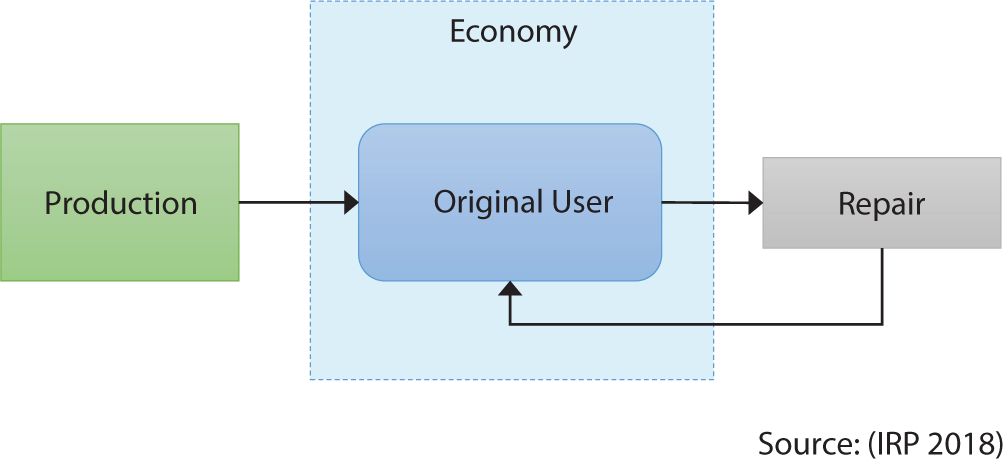
Figure 1.3 Descriptive summary of repair process.
Repair activities are performed at the product-level: an otherwise functional product must have some worn or damaged parts removed and new parts added for it to continue functioning for the duration of its expected life. Rather than the entire product being discarded into a waste or recycling stream due to a worn or damaged part, repair activities bring the entire product back to its original functioning capacity for the continuation of the product’s expected life.
1.2.1.3 Refurbishment & Comprehensive Refurbishment
There are differing degrees of refurbishment activity that yield differing levels of material value retention and product utility: Refurbishment and Comprehensive Refurbishment (Figure 1.4).
- Refurbishment refers to: “The modification of an object that is waste or a product to increase or restore its performance and/or functionality or to meet applicable technical standards or regulatory requirements, with the result of making a fully functional product to be used for a purpose that is at least the one that was originally intended.” [7]
- Comprehensive Refurbishment refers to: “Refurbishment that takes place within industrial or factory settings, with a high standard and level of refurbishment.” [1]

Figure 1.4 Descriptive summary of comprehensive refurbishment process.
Standard “Refurbishment” refers to ‘minor overhauls’ (heavy-duty engines and equipment), and ‘upgrades’ (electrical and electronic equipment). The refurbishment process is performed within repair and/or maintenance facilities to increase or restore performance and/or functionality or to meet applicable technical standards or regulatory requirements.
“Comprehensive Refurbishment” differs from standard refurbishment in that it involves a more rigorous process within a factory setting, and is only undertaken by certain sectors including, but not limited to industrial digital printers, medical equipment, and heavy-duty and off-road (HDOR) equipment parts. The addition of value during comprehensive refurbishment enables an almost full new service life for the product.
1.2.1.4 Remanufacturing
Remanufacturing refers to: “A standardized industrial process that takes place within industrial or factory settings, in which cores are restored to original as-new condition and performance or better. The remanufacturing process is in line with specific technical specifications, including engineering, quality, and testing standards, and typically yields fully warranted products. Firms that provide remanufacturing services to restore used goods to original working condition are considered producers of remanufactured goods” [1] (Figure 1.5).

Figure 1.5 Descriptive summary of remanufacturing process.
This definition aligns with others from the literature, including from the WTO [2], Nasr and Thurston [5], USITC [3], and six global automotive remanufacturing associations1 [6].
For a VRP to be considered ‘remanufacturing’, there is a minimum expectation of an industrial process in an industrial setting, consisting of specific activities including disassembly and cleaning, the requirement for testing and documentation, and the assurance of ‘as-new or better-than-new’ performance and quality of the remanufactured product.
The exact process undertaken by remanufacturers necessarily differs by product type: In most cases, remanufacturing includes the complete disassembly of all component parts for inspection and cleaning, however in the case of some products (e.g. industrial digital printers), disassembly only down to the module-level may be appropriate. This is especially true when the module itself has been designed for remanufacturing, in which case, by design, the module may have a longer expected service life than the product into which it is incorporated. Similarly, different sectors may utilize different reassembly procedures: In the case of medical devices, every disassembled part has an identifying serial number, and must be reassembled into the same remanufactured product; this differs from other sectors where disassembled parts may go directly into a general inventory and utilized as needed in the remanufacturing of completely different product units.
1.2.2 Expanded Systems-Perspective for VRPs
One of the most significant challenges to increasing the scale of VRPs in economies around the world is the complex nature of the circular economic system, which must consider stakeholders and conditions beyond those required under the traditional linear system. These include: collection infrastructure and incentives regulatory classifications and terminology that can interfere with access and trade; markets and social norms that associate ‘new’ products with status and quality; and well-entrenched technological and production systems oriented towards linear flows and heavily-scoped producer responsibility (Figure 1.6).
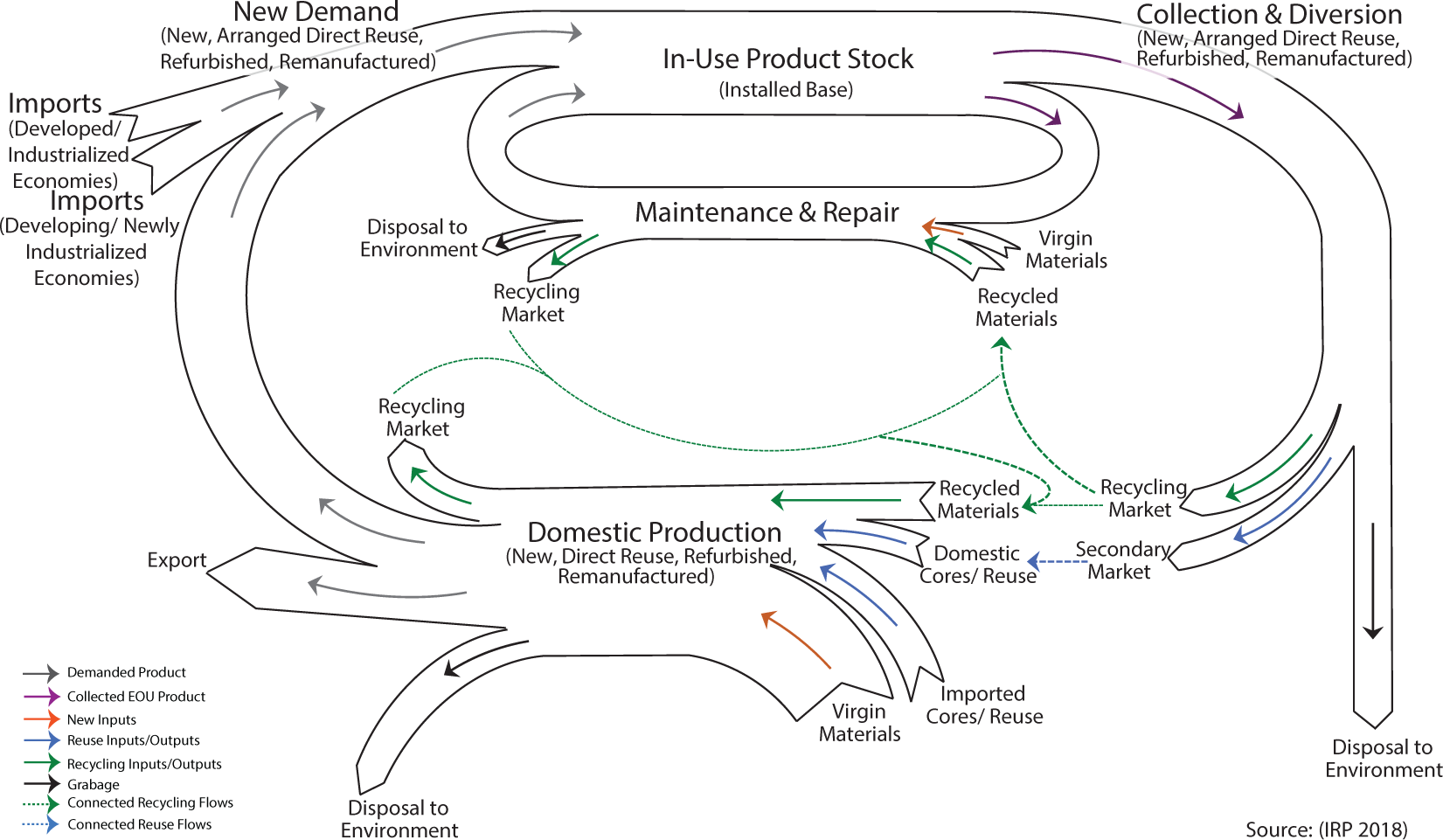
Figure 1.6 Description of the complex economic system required to support value-retention processes.
1.2.3 Evaluating the Value-Retention Potential of VRPs
In the context of VRPs, end-of-use (EOU) must be differentiated from end-of-life (EOL), as these critical terms clarify where opportunity for VRPs exist. In the design of new products, specifications for expected service life of the product are established. The expected life determines the designed durability and duration of the product: how many cycles, runs, miles, hours, etc. it should perform before maintenance interventions are required to ensure performance (e.g. repair, refurbishment), and how many of these can be performed before the product will degrade beyond use or reach EOL. Product EOL signifies that there are no other options for the product, but to be recycled or disposed into the environment. However, if other options exist to keep the product, and/or its components, within the market – via VRPs – then the product has only reached EOU.
The opportunity for VRPs lies in determining and understanding how a seeming product EOL may actually only be product EOU. In other words, once a product or components has reached EOU, it may be directed into EOL options of recycling or disposal – it may also, where infrastructure exists, be directed into a secondary market for repair, arranging direct reuse, refurbishment or comprehensive refurbishment, or remanufacturing instead.
The IRP [1] found that VRPs could be organized into two categories (Figure 1.7):
- Full Service Life Processes refer to processes that enable the fulfillment of a complete new life for every usage cycle of the product, and includes manufacturing (Original Equipment Manufacturing, or OEM New), comprehensive refurbishment, and remanufacturing processes. These processes take place within factory settings and industrial operations;
- Partial Service Life Processes refer to processes that enable the completion of, and/or slight extension of, the expected product service life, through arranging direct reuse of the product, repair, and refurbishment. These processes take place within maintenance or intermediate maintenance operations.
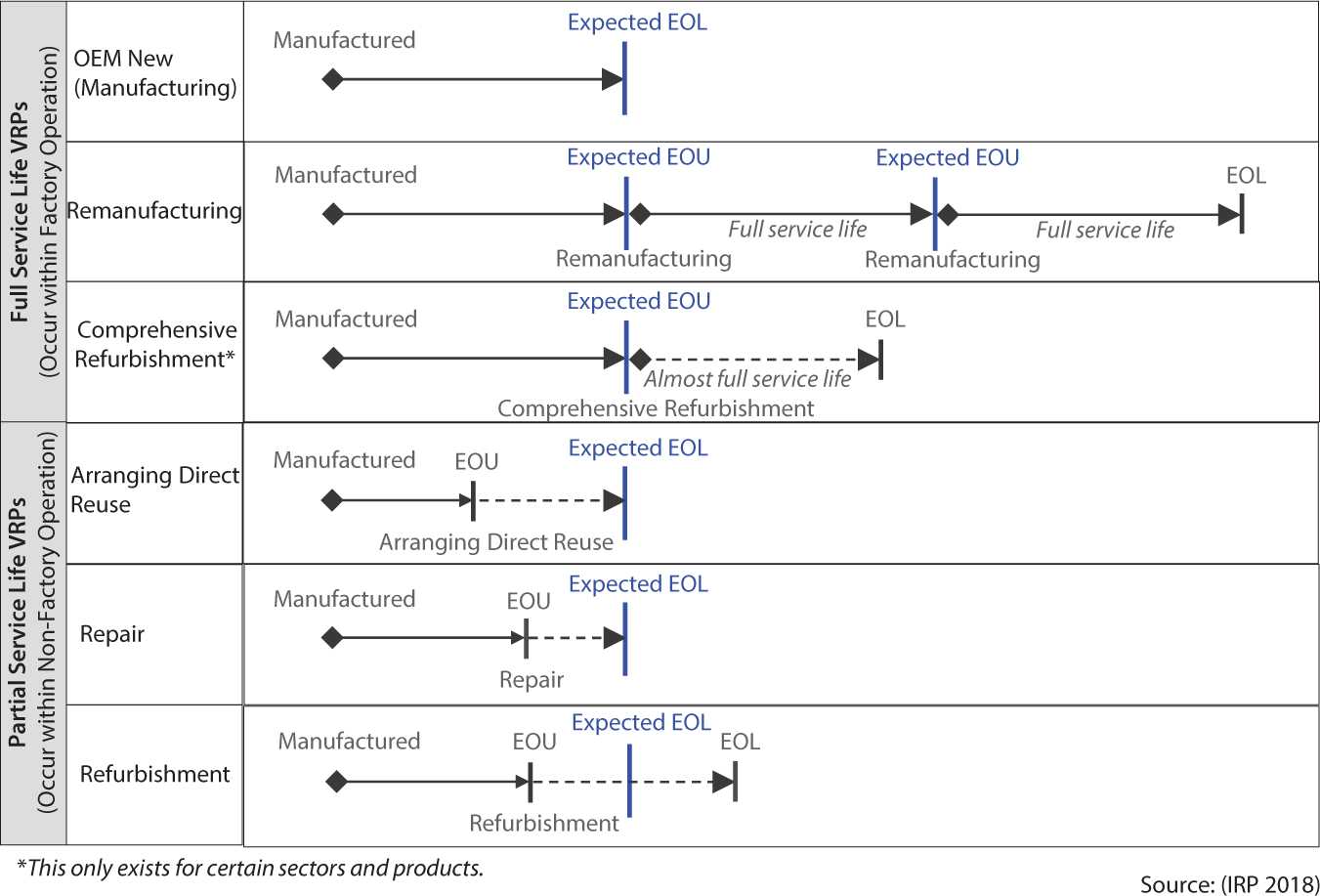
Figure 1.7 Summary of value-retention processes differentiation within the context of end-of-use (EOU) and end-of-life (EOL).
1.3 Value-Retention Process Evaluation Results
Although is it common to consider and discuss VRPs as ‘equivalent’ under a broad terminology of ‘reuse’, to do so would be problematic and misrepresentative. This is because each VRP is distinct in how it affects the product lifecycle, retains material and embodied value, and generates utility for the user.
1.3.1 Environmental Impacts of Value-Retention Processes at the Product-Level
In its assessment of VRPs, the IRP was interested in the environmental impacts of each VRP across five environmental metrics:
- New material requirement (kg);
- Embodied energy (MJ) associated with the extraction and processing of raw materials prior to production;
- Embodied emissions (kg CO2-eq.) associated with the extraction and processing of raw materials prior to production;
- Process energy (MJ) required for gate-to-gate production activity;
- Process emissions (kg CO2-eq.) generated as a result of gate-to-gate production activity.
Based on IRP case study product research and analysis, the material efficiency, energy requirement, and emissions generation associated with US-based production of case study products, by OEM New and VRPs are presented in Figure 1.8 through Figure 1.10 [1].

Figure 1.8 Impact reduction potential for USA via value-retention processes for industrial digital printers.
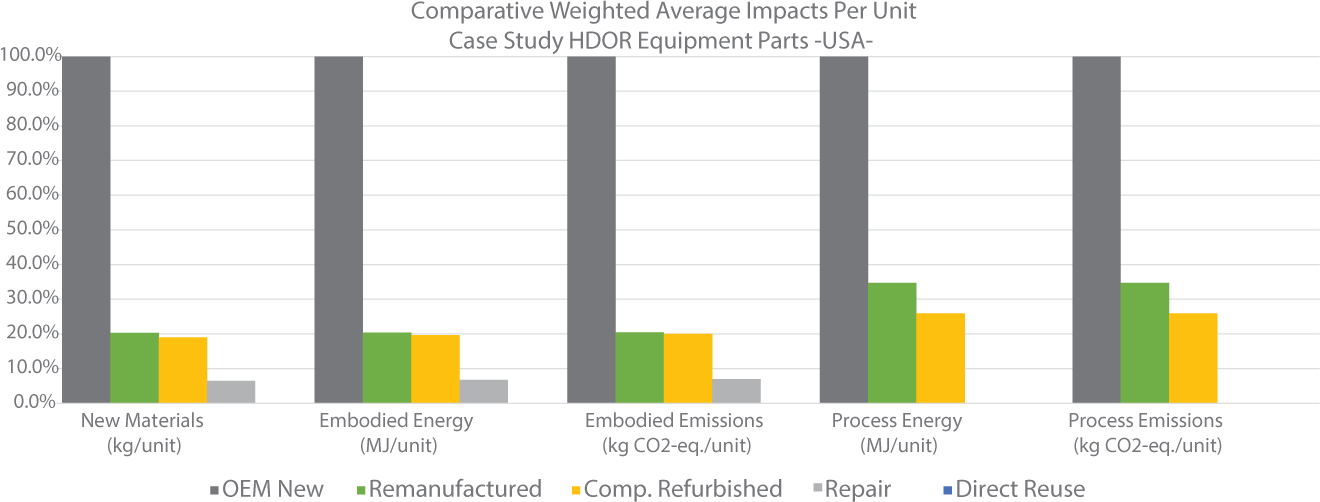
Figure 1.9 Impact reduction potential for USA via value-retention processes for HDOR parts production.

Figure 1.10 Impact reduction potential for USA via value-retention processes for vehicle parts production.
1.3.2 Economic Advantages of Value-Retention Processes at the Product-Level
The economic considerations of VRPs at the product level are also highly relevant to the discussion of impacts and benefits that become possible through the use of VRPs in the pursuit of circular economy. In its study the IRP assessed the select case study products, presented in Figure 1.11 through Figure 1.13, across the following economic metrics:
- Production waste (including scrap recyclable material) (kg/unit);
- Cost advantage (% $USD per unit vs. OEM New); and
- Employment opportunity (Full-time Laborer or FTE/unit).

Figure 1.11 Employment opportunity, cost advantage, and production waste reduction via VRPs for case study industrial digital printers.

Figure 1.12 Employment opportunity, cost advantage, and production waste reduction via VRPs for case study vehicle parts.
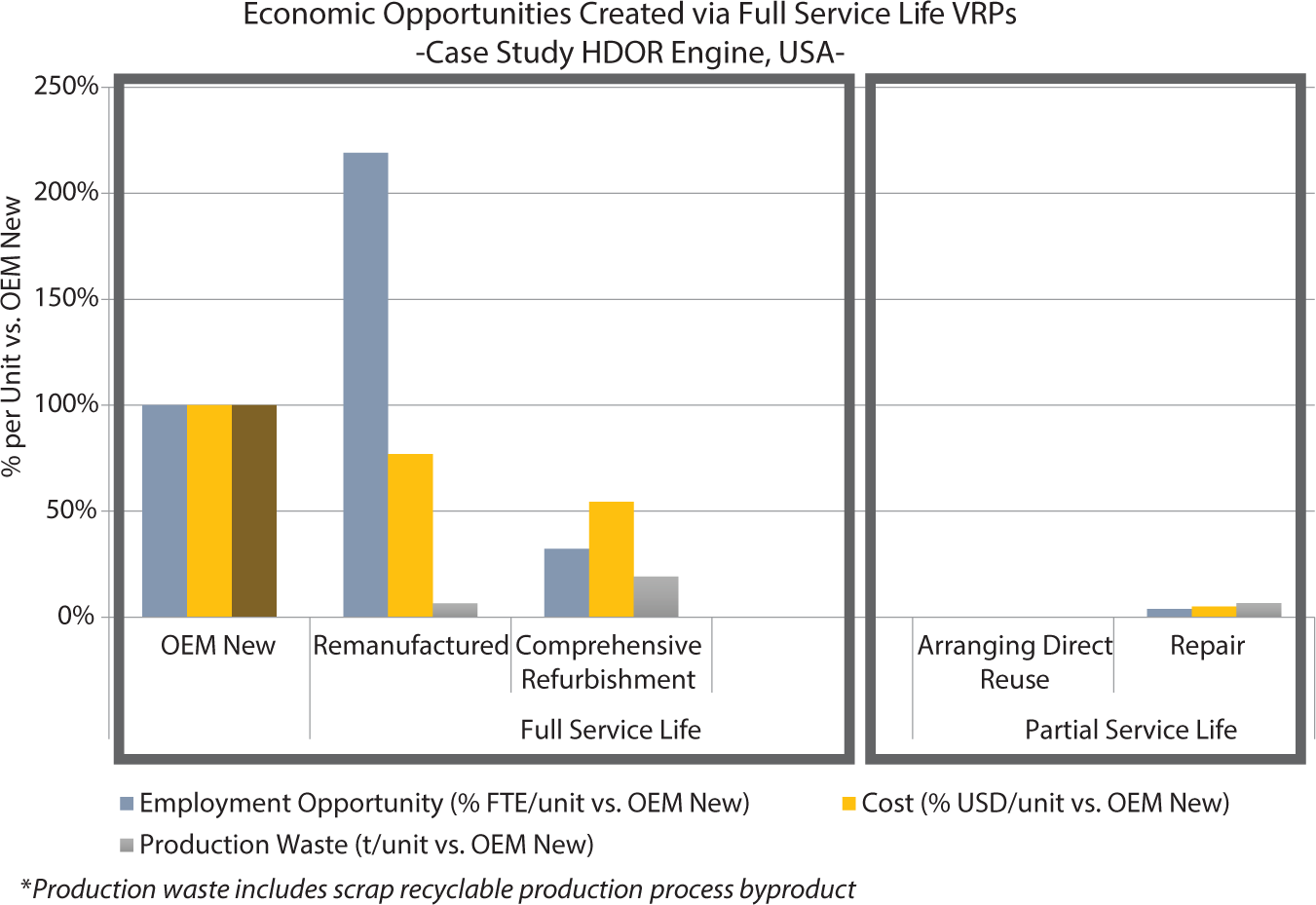
Figure 1.13 Employment opportunity, cost advantage, and production waste reduction via VRPs for case study HDOR equipment parts.
1.3.2.1 Production Waste Reduction through Value-Retention Processes
Through the reuse of viable products/components, significant processing activities are no longer required, and the waste associated with those processes is offset. Every VRP offers some degree of reduced production waste: where arranging direct reuse requires no new material inputs, and therefore no additional production wastes, remanufacturing enables a production waste reduction between 90% (industrial digital printers) and 95% (vehicle parts). The decrease in the volume of production waste and recyclables is first and foremost an economic opportunity associated with increased adoption of VRPs: this reduction in waste leads to reductions in storage, hauling and tipping fees that would otherwise be borne by the producer.
1.3.2.2 Production Cost Advantages of Value-Retention Processes
Significant cost advantages are made possible through VRPs, as a large share of costs to the producer are offset by the reduced requirement for new input materials and associated processing costs. In addition, for some products and sectors, process energy-related costs can be significantly reduced by offsetting many processing stages and activities with more manual activities. According to the IRP Report [1], cost advantages of VRPs range, conservatively, between 15% and 80% of the cost of an OEM New version of the product.
1.3.2.3 Employment Opportunities through Value-Retention Processes
There is significant employment opportunity inherent in VRPs. While the cost of labor remains a significant share of total production costs in all manufacturing activity, in the case of VRPs, the additional labor cost is typically more than offset by the relative reduction in materials, utilities, and other overhead and operating costs. In the case of remanufactured products, a significant increase in full-time labor requirement is observed, and at the same time, remanufacturers are typically able to offer a consistent cost advantage to potential customers. It is important to note that the employment opportunity is not equal across all VRPs: Only remanufacturing, and to some degree comprehensive refurbishment, offer greater full-time employment opportunity than traditional OEM New production. Thus, as the production share of remanufacturing and refurbishment are increased, a corresponding increase in full-time employment opportunities is possible.
1.3.3 Systemic Barriers to VRPs
The objective of increasing the scale and prevalence of VRPs and products within an economy requires a holistic approach that considers the magnitude and cause of barriers throughout the entire system, as well as how those barriers may interact to compound or negate one another. There are four main categories of barriers to VRPs according to the IRP, outlined below:
- Regulatory and Access Barriers: Refers to barriers that restrict the movement of, and/or access to VRP products or cores. These barriers may manifest as prohibitions of the production and/or sale of VRP products into a domestic market; they may also manifest as increased fees, tariffs or other transactional costs associated with bringing finished VRP products or components (cores) for VRP production into the domestic economy.
- Collection Barriers: VRP production is dependent on the ability to access EOU products and components; the majority of economic and environmental benefits created via VRPs are tied to the offset or original production materials and processes through the reuse of viable ‘cores’. If collection infrastructure is inadequate or inefficient, the reuse input requirements of VRP producers cannot be met.
- Technological Barriers: When technology, product knowledge, process know-how and/or skilled labor are insufficient, the capacity of the VRP producer is relatively constrained, and the associated potential economic and environmental benefits are limited. In such cases, in addition to being limited in the current state, the VRP producer’s ability to build capacity over-time – whether demand opportunity exists or not – is likely stunted.
- Market Barriers: The complexity of customer (consumer) attitudes, preferences, willingness-to-pay, and actual purchasing behavior creates significant additional challenges for VRPs, even in markets where no other barriers are present. Where a strategic approach for many VRP producers is to offer a discounted price to incentivize the purchase of the VRP product, this price discount may also limit the VRP producer’s ability to maximize profit margins and find cost advantage in the production process.
1.4 Key Insights Regarding VRPs
1.4.1 Value-Retention Processes Create Net-Positive Outcomes for Circular Economy
At the product-level, offset embodied energy and emissions create immediate and obvious ranges of potential impact reduction and value-retention associated with the adoption of VRPs. When considered in the context of the process definitions, and the subsequent quality and performance of the VRP product, it becomes clear that different VRPs are appropriate for different objectives. Where remanufacturing and comprehensive refurbishment (Full Service Life Processes) add and retain relatively greater value in the system in terms of materials and functional form, for some products and economies these relatively more intensive industrial processes may increase the associated process energy requirement and process emissions. At the same time, the rigorous industrial process can lead to greater economic opportunities in the form of increased labor requirement, decreased waste management costs, and greater utility, for the customer.
In contrast, arranging direct reuse, repair, and refurbishment (Partial Service Life Processes) can be undertaken at a relatively lower cost, enabling customers with budget constraints to continue participating in the market; and they can be completed with lesser material requirement, energy requirement and associated emissions and waste. However, Partial Service Life processes offer only limited value and utility to the customer and retain less value in the system over time.
1.4.2 Product-Level Efficiency Gains Lead to Economy-Level Efficiency Gains
There is often a perception that the pursuit of sustainability must come at an economic cost. While this perception may be warranted in a short-term context, through the adoption of VRPs, significant impact reduction can be achieved at the same time that economic opportunity is being created. The reduction in new material input requirement, and the embodied value inherent in the already-functional form, ensure that VRPs can offset a significant share of costs that would otherwise be required for OEM New production. This cost advantage to the producer generates additional economic opportunities in several ways: first, with lower operating costs there are fewer cost barriers to entry into the marketplace for potential VRP producers, and this can support and enable faster scale-up within domestic industry; and second, lower operating costs may enable VRP producers to pass the cost advantage along to their customers. Lower-priced VRP product options in the market can enable new segments of customers to participate where budget constraints may previously have prevented such engagement.
The relative positive outcome of avoided impacts can be observed across each sector and economy, and highlights the importance of utilizing a systems-view when assessing the potential for VRPs within the circular economy:
- Any increase in VRP production reduces average new material demand and creates an opportunity to avoid requirement for new materials.
- The avoidance of new material inputs creates significant benefits in avoided embodied materials energy and embodied material emissions impacts that would otherwise be incurred through the extraction and primary processing of those new input materials. Regardless of which VRP is adopted, a net-positive reduction in embodied energy and embodied emissions is consistently observed across every sector and economy.
- The significant retention of the functional form and material value of component parts enabled via VRPs offsets the production waste associated with original production.
1.4.3 The Mechanics of a System Designed for Value-Retention Processes
There are many existing attributes and aspects of current production systems that can be leveraged in the pursuit of a system designed for optimized VRP production. While every economy faces different challenges and barriers to VRPs, each also has an already established relationship with the key aspects of the VRP system that can inform a policy and implementation strategy:
- For economies that currently engage in diversion and collection to recycling markets, these systems can be adapted to include diversion to secondary markets for reuse and VRP production;
- For economies that do not engage in collection or reverse-logistics, expertise in current forward-logistics systems can be leveraged to improve overall logistics system utilization and productivity, alongside the application of Best Practices that may have already been established for collection programs in other jurisdictions;
- For economies with technological barriers affecting producer capacity, the learnings about technology transfer enabled through improved access and trade in other products categories can be employed to the benefit of VRP production.
1.4.3.1 Value-Retention Processes are a Gateway to Recycling
There is a common misperception that VRPs may detract from, or compete against recycling; in fact, all VRPs and recycling are complementary and essential within the context of a circular economy. A hierarchical perspective on value-retention is useful: where VRPs ensure that both material value and functionality are retained within the product, once functionality has degraded it is the recycling system that ensures material value is still retained within the broader system. An alternate way of considering this complementarity is to consider that all products will eventually reach a point at which they no longer qualify for arranging direct reuse, repair, refurbishment or remanufacturing – either because of the associated cost, or because the implicit quality and utility-potential has been degraded. At that point, there is still an essential need for efficient and effective recycling systems to recover the value of the materials contained within the product, and to recirculate those materials back into circular materials economy.
1.4.4 Overcoming Barriers to Value-Retention Processes
1.4.4.1 Economic Conditions and Access to VRP Products
The presence of access barriers dominates the ability of an economy to realize the benefits from VRPs through uptake and diffusion. In the absence of clear domestic market demand and access to VRP technologies, potential VRP producers are unable to support the business-case for VRPs, in spite of the known environmental and economic benefits. Access barriers slow the growth of VRP production within the domestic economy, as well as the speed of VRP capacity scale-up, and the related growth in domestic demand for VRP products. Technology and knowledge transfer that is essential for enhancing the learning curve of domestic producers is inhibited, ultimately preventing opportunities for improved production and operational efficiency.
1.4.4.2 Market Challenges
Education and information is an essential strategy for combatting market barriers. A primary concern of customers in both open and restricted economies is the perceived quality discount associated with non-new products. There is a wide range of misinformation and mistrust related to VRP products. The lack of standards, certifications, and the prevalence of ‘bad experience’ stories have ensured that customers approach VRP products with high risk-aversion tendencies. Educating customers about the differences between VRPs (e.g. refurbishing vs. remanufacturing) so that perceptions about quality can more appropriately reflect actual quality is an important strategy in developed/industrialized markets, which need to focus on growing demand for VRP products as viable alternatives.
Both industry and government have a role to play in overcoming market-based barriers to VRPs. Where government must necessarily be concerned about the assurance of consumer interests and safety, industry has an opportunity to respond to these concerns through the development of standards, certification and additional merit-based systems that can offer reassurance to both customers and policy-makers.
1.4.4.3 Regulatory and Policy Opportunities
Comprehensive restrictions and prohibitions, and/or burdensome requirements debilitate natural market forces, and ensure that many potential customers are unable to participate in the current market due to access and/or budget constraints. It is possible to ensure the protection of consumer safety and interests without comprehensive prohibitions and restrictions. The development and employment of VRP standards, certifications, and other non-regulatory forms of enforcement are being investigated and implemented currently in developed/industrialized economies.
1.4.4.4 Diversion & Collection Infrastructure
VRPs are reliant on the diversion and collection of EOU products for use as inputs to the process; while individual companies may have established their own networks and collection infrastructure to ensure sufficient supply of reuse inputs, this can create a significant and inefficient cost-burden on the individual organization. Other examples of shared collection infrastructure, such as e-waste diversion and packaging extended producer responsibility (EPR) programs have demonstrated the ability to both increase collection rates and distribute the costs of operating the system. The requirement that these systems be funded by industry can provide an incentive to pursue greater cost-efficiency and performance over time. Creative and shared approaches to collection infrastructure may have some merit in cases where the objective is to increase collection and retention of value within a system.
1.4.4.5 The Nature of Barriers Must Guide Strategic Barrier Alleviation
Economies face distinct combinations of VRP barriers and may have unique objectives for VRPs as part of an economic or environmental agenda. As such, there may be a range of potential strategic interventions available to policy- and decision-makers depending on each unique situation, as demonstrated in Figure 1.14.

Figure 1.14 Differentiated barrier alleviation strategies for different economic objectives.
1.5 Conclusions
The circular economy sets out a framework in which VRPs work alongside other essential economic and behavioral strategies to reduce the environmental burden of the global economy. However, this is a grand vision, and significant market transformation is required to achieve the potential economic and environmental benefits promised by circular economy. Ultimately, responsibility for scale-up and adoption rests with every decision-maker on the planet: from the individual consumer making an everyday purchase decision, through to the policy-maker considering how to plan for economic growth in the context of international GHG emissions reduction commitments. The next market transformation must ensure a shift in understanding, awareness, access and adoption of VRPs for each one of these decision-makers.
There are a range of opportunities to help kick-start this much-needed market transformation, and both governments and industry have an important role to play in helping to increase the adoption of VRPs. The inclusion of VRPs within the domestic production mix has been shown to create net-positive per-unit reduction in new material requirement, embodied material energy, embodied material emissions, and in many cases, process energy and emissions as well. The increased presence of VRPs within an economy leads to an increase in avoided production impacts in every case. The most significant value-retention and impact avoidance comes from Full Service Life VRPs of remanufacturing and comprehensive refurbishment, despite their current low intensity in the most well-established economies. Arranging direct reuse and repair activities offer an important function of extending product utility at a minimal impact, particularly for customers who cannot afford to participate in the market in other ways.
The objective of increasing the scale and prevalence of VRPs and VRP products within an economy requires a holistic approach that considers the magnitude and cause of barriers throughout the entire system, as well as how those barriers may interact to compound or negate one another. There are multiple, diverse, and interconnected stakeholders, each with a potential role to play in the transition to circular economy and the uptake of VRP production:
- Government policy-makers have a central and pivotal role related to the presence and alleviation of regulatory, access and collection infrastructure barriers;
- Other stakeholders, including industry, may have an important role to play in the alleviation of barriers related to the customer market and technological capacity.
For economies wishing to pursue circular economy and VRPs as a key aspect of an effective system, acknowledgement of the underlying order within the system can help to guide strategic policy opportunities, as simplified in Figure 1.15.
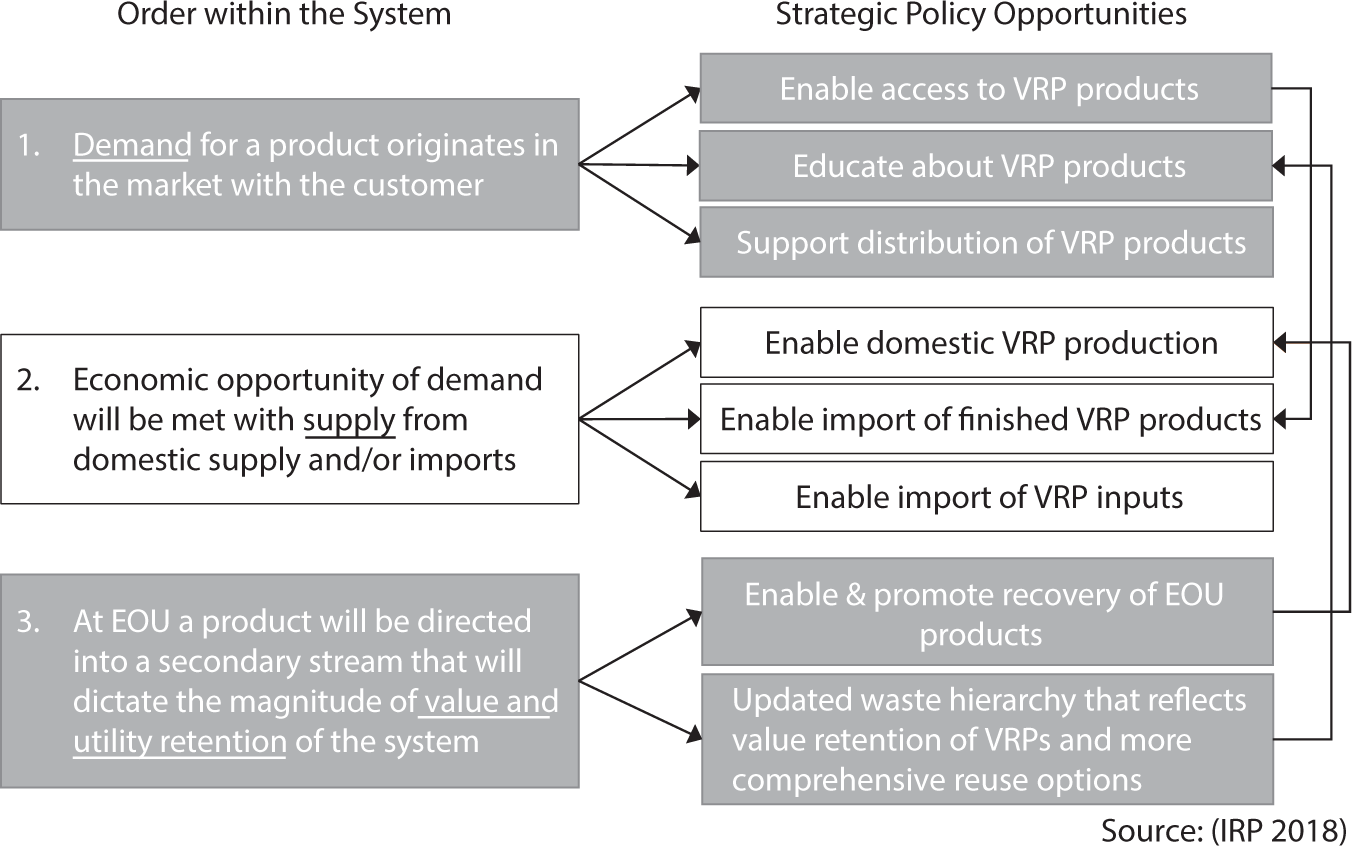
Figure 1.15 Inherent system order enables priorities for alleviation of VRP barriers.
A simplified approach to barriers assessment and the role of government and industry members in developing strategic responses to barrier alleviation is outlined in Figure 1.16.

Figure 1.16 Role of government and industry decision-makers in assessment of VRP barriers and strategic priorities.
References
1. IRP, Re-Defining Value - The Manufacturing Revolution: Remanufacturing, Refurbishment, Repair and Direct Reuse in the Circular Economy. Edited by Nabil Nasr, Jennifer Russell, Stefan Bringezu, Stefanie Hellweg, Brian Hilton, Cory Kreiss and Nadia von Gries, United Nations Environment Programme, Nairobi, Kenya, 2018.
2. World Trade Organization, Market Access for Non-Agricultural Goods: Answers to Questions from China on Remanufacturing. WTO Document TN/MA/W/122, Geneva, 2009.
3. U.S. International Trade Commission, Remanufactured Goods: An Overview of the U.S. and Global Industries, Markets and Trade, U.S. International Trade Commission, Washington, D.C.: U.S., 2012.
4. Hardin, W. and Stone, M., Remanufacturing of Electrical Equipment vs. Reconditioning or Rebuilding of Electrical Equipment. Professional Electronic Apparatus Recyclers League, 2012. Accessed from http://www.pearl1.org/PEARL-News/remanufacturing-reconditioning-electrical-equipment.htm.
5. Nasr, N. and Thurston, M., Remanufacturing: A key enabler to sustainable product systems. Proceedings of the 13th CIRP International Conference on Lifecycle Engineering, Leuven, 2006.
6. Motor & Equipment Remanufacturing Association, Remanufacturing Associations Agree on International Industry Definition [Press Release], accessed 15 Sep 2016. https://www.mera.org/news/remanufacturing-associations-agree-international-industry-definition-0, 2016.
7. Conference of the Parties to the Basel Convention on the Control of Transboundary Movements of Hazardous Wastes and Their Disposal. Technical guidelines on transboundary movements of electrical and electronic waste and used electrical and electronic equipment, in particular regarding the distinction between waste and non-waste under the Basel Convention, Appendix 2: Glossary of Terms. edited by COP 13: United Nations Environment Programme, 2017.
8. European Commission, Directive 2008/98/EC of the European Parliament and of the Council of 19 November 2008 on waste. Off. J. Eur. Union L, 312, 13, 22.11, 2008.
